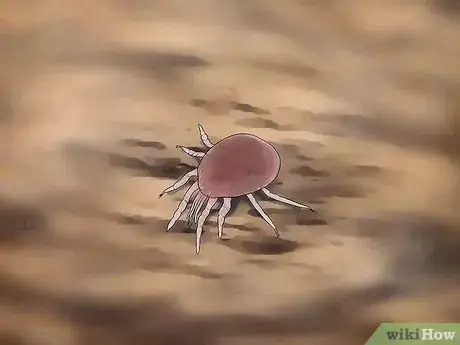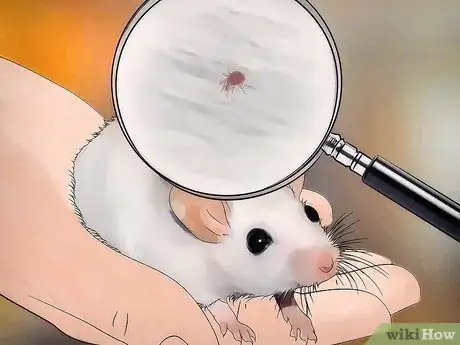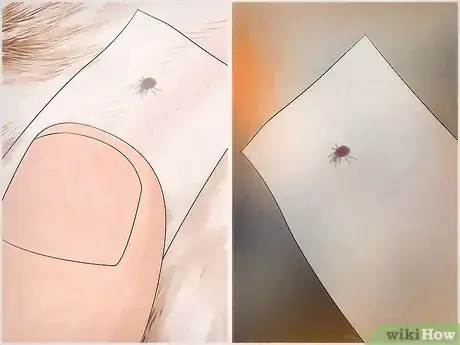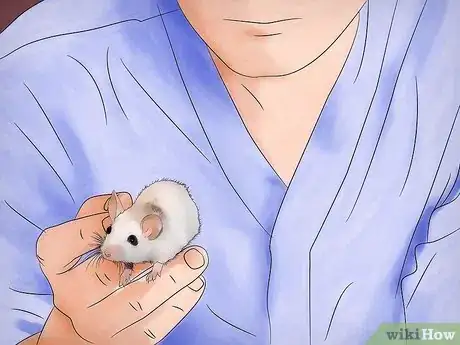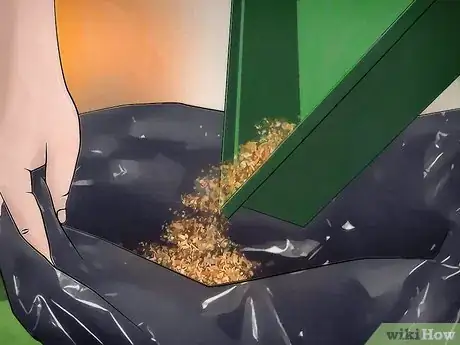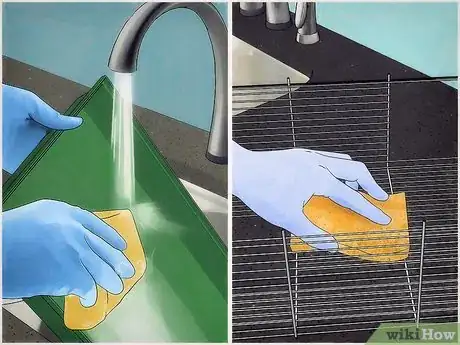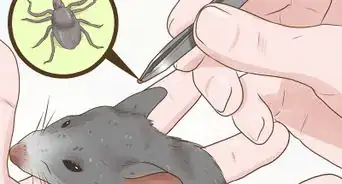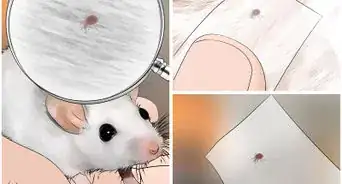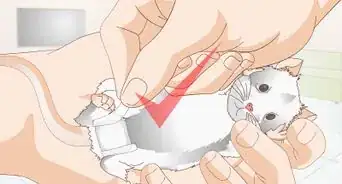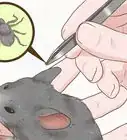This article was co-authored by Pippa Elliott, MRCVS. Dr. Elliott, BVMS, MRCVS is a veterinarian with over 30 years of experience in veterinary surgery and companion animal practice. She graduated from the University of Glasgow in 1987 with a degree in veterinary medicine and surgery. She has worked at the same animal clinic in her hometown for over 20 years.
This article has been viewed 43,956 times.
Mites are a common problem for pet mice. Although tiny, they can cause major irritations of your pet mouse’s hair and skin, which could make him feel itchy and miserable. Mites can hide in a mouse’s fur, making them hard to spot. If you can see mites on your pet mouse, he will need to be treated by your vet right away so he can start feeling better.
Steps
Looking for Mites on Your Pet Mouse
-
1Learn what a mite looks like. Mites are only a small fraction of an inch long (1/32 inch).[1] On your mouse’s fur, an adult mite will look like a small black dot. A mite egg will look like a round speck. Given the tiny size of mites, you may not be able to tell the difference between an adult mite and a mite egg.
-
2Scan your mouse’s fur with a magnifying glass. A magnifying glass will help you spot mites in your mouse’s fur.[4] With the magnifying glass, look for tiny specks in the fur. Since mites can cause intense itching around the shoulders, neck, and face, start your search in those areas.[5]
- If you do not have a magnifying glass, you can find one at your local pharmacy.
Advertisement -
3Place clear tape on your mouse’s fur. Rather than using a magnifying glass, you could use tape to spot mites on your mouse. Take a small piece of tape (an inch or two in length), place it on an affected area of fur, then remove the tape and see what stuck to it.[6] The mites would look like black specks on the tape.
- Be gentle when taking the tape off. You do not want to hurt your mouse.
- Keep in mind that not all mice show signs of mites. The mites on your mouse may not cause him to itch very much, so you may not see a section of affected fur.[7]
-
4Take your mouse to your vet. If you have spotted mites on your mouse (or if he’s extremely itchy), take him to your vet. Your vet will take a close look at your mouse’s skin and fur. They will take a sample from your mouse’s fur and look at it under the microscope to confirm your mouse has mites.
Treating and Preventing Mite Problems
-
1Treat your pet mouse right away. If left untreated, mites can cause your mouse to itch and scratch constantly, making feel him worse and worse over time. Your vet will prescribe one of the available mite-killing medications. These medications can by injected (by your vet), given by mouth (by you), or put on your mouse’s skin (by you). Follow your vet’s treatment instructions carefully.
- A drug called ivermectin is a common mite-killing treatment for pet mice. Although ivermectin can be given by mouth or applied directly to the skin, skin application is the safer and more effective choice.
- If you are unsure how to give the treatment, ask your veterinarian to show you how.
- Since you will need to clean your mouse's cage, keep him in a separate cage with all of his necessities (food, water, toys) until he has finished treatment.
-
2Remove the bedding from your mouse’s cage. Bedding is a common source of mites in pet mice.[8] To prevent your mouse from getting re-infected with mites, remove and discard all of his cage’s bedding. Clean and disinfect his cage before you put fresh and clean bedding in the cage.
-
3Clean your mouse’s cage and its accessories. After removing the cage accessories, clean the cage with hot water, detergent, and a scrub brush. To clean the accessories, put them all in a large bucket filled with hot, soapy water and clean them with a scrub brush (not the same one you used to clean the cage). Use a second bucket to rinse the accessories before disinfecting them.[9]
- Use an unscented dish soap.
- Clean the inside and outside of the cage.
-
4Disinfect the cage and its accessories. To disinfect, mix 1/2 tablespoon of bleach per 1 gallon of cold water. Put some of this solution in a spray bottle and spray the inside and outside of your mouse’s cage. You can either wipe the cage dry after 2 minutes or let it air dry. For the cage accessories, add the bleach solution to another bucket and let the accessories soak for about 30 seconds. Let them air dry before putting them in the cage.[10]
- When cleaning and disinfecting your mouse’s cage, you should not be able to smell the cleaning agent.
Warnings
References
- ↑ http://www.extension.umn.edu/garden/insects/find/bird-and-rodent-mites-in-homes/
- ↑ http://www.peteducation.com/article.cfm?c=18+1804&aid=2419
- ↑ http://www.merckvetmanual.com/pethealth/exotic_pets/mice/diseases_and_disorders_of_mice.html
- ↑ http://www.peteducation.com/article.cfm?c=18+1804&aid=2419
- ↑ http://www.merckvetmanual.com/pethealth/exotic_pets/mice/diseases_and_disorders_of_mice.html
- ↑ http://www.peteducation.com/article.cfm?c=18+1804&aid=2419
- ↑ http://www.merckvetmanual.com/pethealth/exotic_pets/mice/diseases_and_disorders_of_mice.html
- ↑ http://www.peteducation.com/article.cfm?c=18+1804&aid=2419
- ↑ http://www.afrma.org/howclean.htm
- ↑ http://www.afrma.org/howclean.htm
- ↑ http://www.peteducation.com/article.cfm?c=18+1804&aid=2419
- ↑ http://www.merckvetmanual.com/pethealth/exotic_pets/mice/diseases_and_disorders_of_mice.html
- ↑ http://www.peteducation.com/article.cfm?c=18+1804&aid=2419
- ↑ http://www.extension.umn.edu/garden/insects/find/bird-and-rodent-mites-in-homes/
- ↑ http://www.peteducation.com/article.cfm?c=18+1804&aid=2419
- ↑ http://www.peteducation.com/article.cfm?c=18+1804&aid=2419
About This Article
To spot mites on your pet mouse, you'll probably need to use a magnifying glass since mites are so small. With a magnifying glass, look for small dark specks that have 8 legs. If you don't have a magnifying glass, try pressing a small piece of tape on your mouse's fur. Gently peel it off, and inspect it for small black specks, which could be mites. If you spot any mites, or if your mouse has been really itchy lately, take it to see a vet so they can take a closer look and figure out what's going on. For advice from our Veterinary co-author, like how to treat and prevent mites, scroll down!
